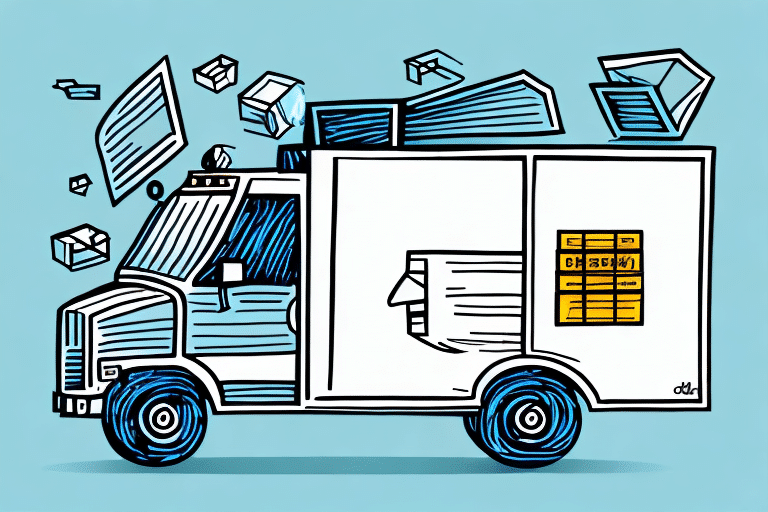Evolution and Trends in E-Commerce Delivery
E-commerce has transformed the retail landscape, offering unparalleled convenience by allowing consumers to purchase products from anywhere with just a few clicks. Over the past decade, the delivery systems supporting e-commerce have evolved significantly to meet growing consumer demands and technological advancements.
From Postal Services to Advanced Carrier Networks
In the early days of e-commerce, businesses primarily relied on traditional postal services for deliveries, which were often slow and prone to delays. The rise of specialized carrier companies like FedEx and DHL revolutionized the industry by offering faster, more reliable shipping options. This shift enabled businesses to meet the increasing demand for prompt deliveries, essential for maintaining customer satisfaction.
Emergence of Same-Day and Next-Day Delivery
As e-commerce continued to grow, consumers began expecting even faster delivery times. Companies like Amazon pioneered same-day and next-day delivery services, setting new standards in the industry. According to a Statista report, the adoption of expedited delivery options has been steadily increasing, with a significant percentage of consumers willing to pay a premium for faster shipping.
Future Innovations: Drones and Robotics
Looking ahead, the integration of drones and robotics into e-commerce delivery promises to further revolutionize the sector. Companies like Amazon and UPS are actively testing drone delivery systems, which have the potential to reduce delivery times and operational costs. Additionally, autonomous delivery robots are being deployed in urban areas to enhance last-mile delivery efficiency.
Enhancing Customer Experience Through Delivery
Delivery plays a crucial role in shaping the overall customer experience in e-commerce. A seamless and efficient delivery process can significantly boost customer satisfaction, loyalty, and retention.
Offering Diverse Delivery Options
Providing multiple delivery options caters to varying customer preferences. Options such as standard shipping, expedited delivery, and click-and-collect services allow customers to choose the method that best fits their needs. This flexibility can lead to increased customer satisfaction and higher conversion rates.
Real-Time Tracking and Notifications
Implementing real-time tracking systems helps keep customers informed about the status of their orders. Services like UPS Tracking and FedEx Tracking provide detailed updates, reducing anxiety and enhancing the overall delivery experience.
Efficient Returns and Exchanges
An efficient returns and exchanges policy is vital for maintaining customer trust. Simplifying the return process by offering prepaid shipping labels and clear instructions can improve customer satisfaction and encourage repeat business. According to a Statista study, a significant percentage of online shoppers consider a hassle-free return policy when making purchase decisions.
Types of E-Commerce Delivery Methods
Choosing the right delivery method is essential for balancing cost, speed, and customer satisfaction. Various delivery options cater to different business models and customer expectations.
Standard Shipping
Standard shipping is the most commonly used delivery method, offering affordable rates and broad coverage. While it may take longer to arrive compared to expedited options, it remains a cost-effective choice for both businesses and consumers.
Expedited Shipping: Two-Day and Same-Day Delivery
Two-day and same-day delivery services cater to consumers who prioritize speed. These options have gained popularity, especially in urban areas, where the demand for rapid deliveries is higher. However, they require robust logistics and higher operational costs.
Click and Collect
Click and collect allows customers to purchase products online and pick them up at a local store or designated pickup points. This method eliminates shipping fees and provides convenience for customers who prefer in-person collection.
International Shipping
For businesses with a global customer base, international shipping is crucial. It involves navigating different customs regulations, duties, and longer transit times. Partnering with reliable international carriers and understanding each market's logistics needs are essential for success.
Choosing the Right Shipping Provider
Selecting an appropriate shipping provider is vital for ensuring efficient and reliable deliveries. Several factors should be considered to make an informed decision.
Cost and Pricing Structures
Shipping costs can significantly impact profit margins. It's important to compare pricing structures of various carriers to find the most cost-effective solution. Some providers offer volume discounts or flat-rate shipping, which can be beneficial for businesses with high shipping volumes.
Service Coverage and Reliability
Ensuring that the shipping provider offers comprehensive coverage, both domestically and internationally, is essential. Additionally, reliability in terms of on-time deliveries and minimal loss or damage rates should be a top priority.
Customer Service and Support
Responsive and effective customer service is crucial in resolving any shipping issues promptly. Providers that offer 24/7 support and have a reputation for excellent customer service can enhance the overall delivery experience.
Advanced Features and Integration
Shipping providers that offer advanced features such as real-time tracking, automation tools, and seamless integration with e-commerce platforms can streamline operations and improve efficiency. Evaluating these features can help businesses choose a provider that aligns with their technological needs.
Leveraging Technology in E-Commerce Delivery
Technology plays a pivotal role in optimizing e-commerce delivery processes, enhancing efficiency, and improving customer satisfaction.
Shipping Software Solutions
Advanced shipping software platforms like Shippo and ShipStation offer features such as automated label printing, batch order processing, and seamless integration with various e-commerce platforms like Shopify and Magento. These tools streamline the shipping process, saving time and reducing errors.
Real-Time Tracking and Updates
Implementing real-time tracking systems allows both businesses and customers to monitor the status of shipments in real-time. This transparency reduces uncertainty and enhances trust in the delivery process.
Data Analytics for Optimization
Utilizing data analytics can help businesses optimize delivery routes, manage inventory more effectively, and forecast demand accurately. By analyzing shipping data, companies can identify inefficiencies and make informed decisions to enhance their logistics operations.
Automation and Robotics
Automation technologies, including robotics in warehouses and automated sorting systems, increase efficiency and reduce the potential for human error. These advancements enable faster processing and handling of orders, leading to quicker deliveries.
Sustainable Practices in E-Commerce Delivery
As environmental concerns become increasingly important to consumers, adopting sustainable practices in e-commerce delivery is essential for businesses aiming to reduce their carbon footprint and appeal to eco-conscious customers.
Eco-Friendly Packaging Materials
Using sustainable packaging materials, such as recycled cardboard, biodegradable packing peanuts, and minimalistic packaging, helps reduce environmental impact. According to a Forbes article, businesses that prioritize eco-friendly packaging can enhance their brand image and meet the expectations of environmentally aware consumers.
Optimizing Delivery Routes
Optimizing delivery routes minimizes fuel consumption and reduces greenhouse gas emissions. Implementing route optimization software ensures that deliveries are made in the most efficient manner, saving time and resources.
Adopting Green Delivery Methods
Incorporating green delivery methods, such as electric vehicles, bike couriers, and consolidated shipping, contributes to lowering the overall carbon footprint. Companies like Amazon are exploring the use of electric delivery vans to promote sustainability.
Reducing Packaging Waste
Implementing strategies to reduce packaging waste, such as encouraging customers to opt for less packaging or providing reusable packaging options, supports environmental sustainability and appeals to eco-conscious consumers.
Future Trends in E-Commerce Delivery
The e-commerce delivery landscape is continuously evolving, driven by technological advancements and changing consumer expectations. Understanding future trends can help businesses stay ahead of the competition and adapt to emerging challenges.
Integration of Artificial Intelligence and Machine Learning
Artificial Intelligence (AI) and Machine Learning (ML) are set to play significant roles in optimizing delivery processes. AI can predict demand patterns, while ML algorithms can enhance route optimization and delivery scheduling, leading to increased efficiency and reduced costs.
Expansion of Drone and Autonomous Vehicle Deliveries
The ongoing development and regulatory approval of drone and autonomous vehicle deliveries will expand their use in e-commerce. These technologies promise faster delivery times and lower operational costs, although widespread adoption will depend on overcoming logistical and regulatory challenges.
Personalized Delivery Experiences
Personalization in delivery services, such as customizable delivery windows and tailored communication, will become more prevalent. Leveraging data insights allows businesses to offer a more personalized and satisfying delivery experience to their customers.
Enhanced Sustainability Initiatives
Future sustainability initiatives will focus on further reducing the carbon footprint of delivery operations. Innovations in sustainable packaging, renewable energy-powered delivery fleets, and circular economy practices will be crucial in meeting environmental goals.
Blockchain for Transparent Supply Chains
Blockchain technology offers enhanced transparency and traceability in supply chains, ensuring the authenticity of products and improving trust between businesses and consumers. Implementing blockchain can lead to more secure and efficient delivery processes.
Omnichannel Delivery Solutions
Omnichannel strategies that integrate online and offline delivery channels will become more sophisticated. Seamless coordination between various sales and delivery channels ensures a consistent and efficient customer experience.
Conclusion
Understanding and optimizing e-commerce delivery is essential for the success of any online business. From evolving delivery methods and leveraging technology to adopting sustainable practices and anticipating future trends, a well-managed delivery system enhances customer satisfaction and drives business growth. By staying informed and adapting to the dynamic landscape of e-commerce delivery, businesses can ensure they meet the ever-increasing expectations of modern consumers.








